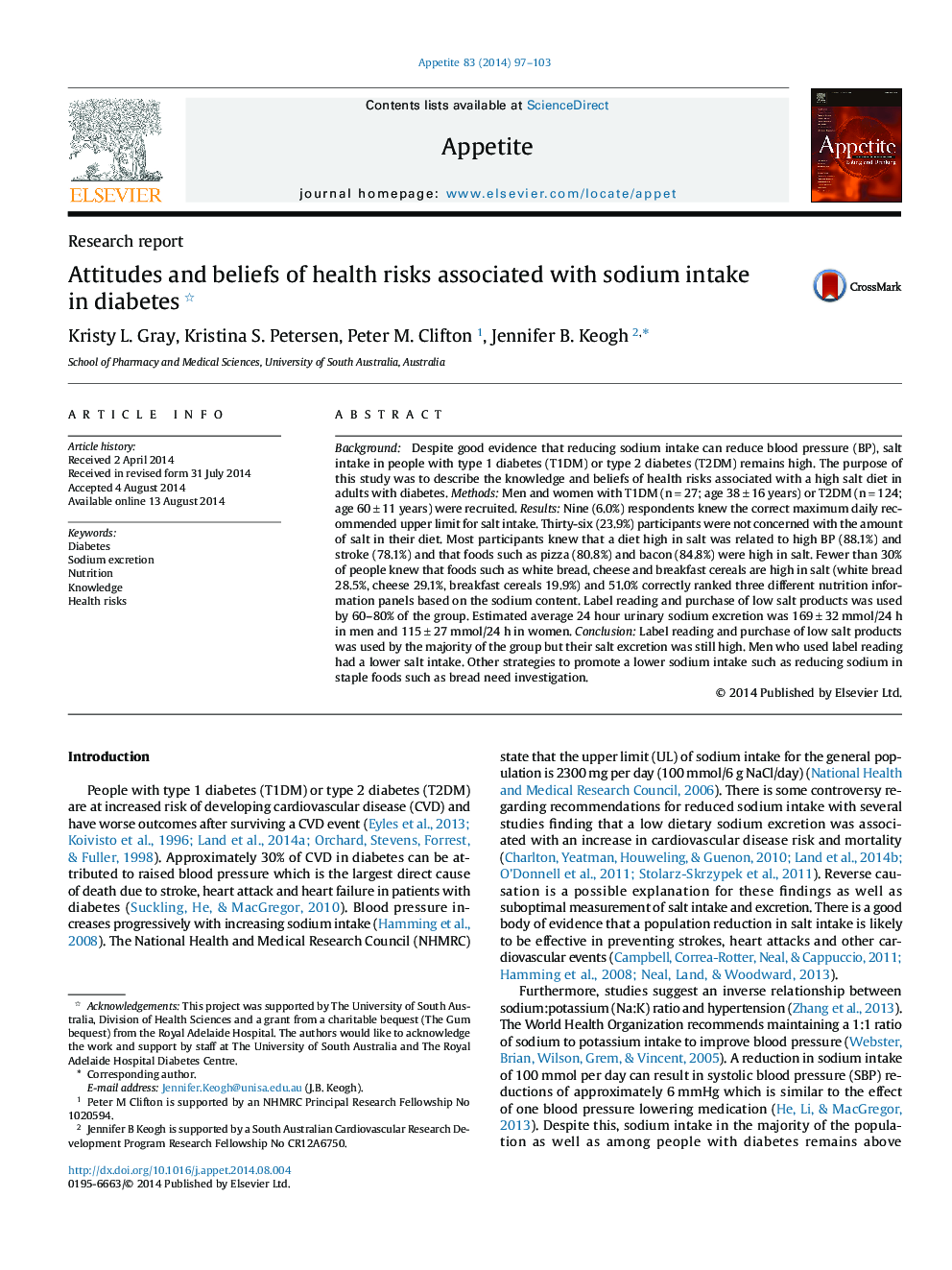| Article ID | Journal | Published Year | Pages | File Type |
|---|---|---|---|---|
| 7309581 | Appetite | 2014 | 7 Pages |
Abstract
Background:â Despite good evidence that reducing sodium intake can reduce blood pressure (BP), salt intake in people with type 1 diabetes (T1DM) or type 2 diabetes (T2DM) remains high. The purpose of this study was to describe the knowledge and beliefs of health risks associated with a high salt diet in adults with diabetes. Methods: Men and women with T1DM (nâ=â27; age 38â±â16 years) or T2DM (nâ=â124; age 60â±â11 years) were recruited. Results: Nine (6.0%) respondents knew the correct maximum daily recommended upper limit for salt intake. Thirty-six (23.9%) participants were not concerned with the amount of salt in their diet. Most participants knew that a diet high in salt was related to high BP (88.1%) and stroke (78.1%) and that foods such as pizza (80.8%) and bacon (84.8%) were high in salt. Fewer than 30% of people knew that foods such as white bread, cheese and breakfast cereals are high in salt (white bread 28.5%, cheese 29.1%, breakfast cereals 19.9%) and 51.0% correctly ranked three different nutrition information panels based on the sodium content. Label reading and purchase of low salt products was used by 60-80% of the group. Estimated average 24 hour urinary sodium excretion was 169â±â32âmmol/24âh in men and 115â±â27âmmol/24âh in women. Conclusion: Label reading and purchase of low salt products was used by the majority of the group but their salt excretion was still high. Men who used label reading had a lower salt intake. Other strategies to promote a lower sodium intake such as reducing sodium in staple foods such as bread need investigation.
Related Topics
Life Sciences
Agricultural and Biological Sciences
Food Science
Authors
Kristy L. Gray, Kristina S. Petersen, Peter M. Clifton, Jennifer B. Keogh,
